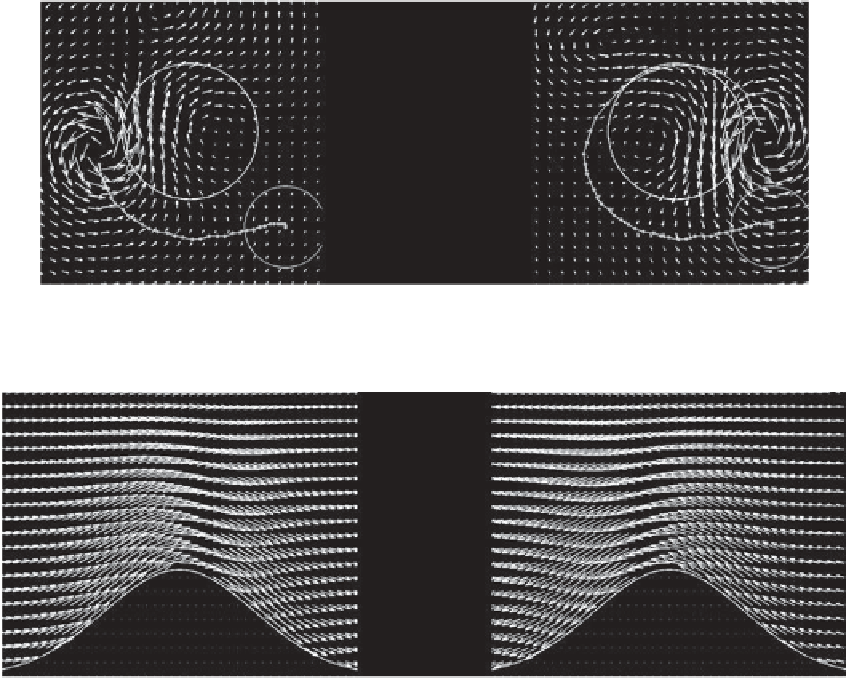Geoscience Reference
In-Depth Information
Horizontal velocity field
(a)
(b)
Vertical velocity field
Figure 7.4.
Numerical simulation of a cyclonic vortex around a submarine mountain. Adapted from
Zavala Sansón et al.
[2012].
Upper panels: Horizontal velocity field and trajectory calculated at
t
= 13.5
T
(left) and
t
=19
T
(right), with
T
= 30 s the rotation
period of the Coriolis platform. The vortex is initialized at the southeast flank of the mountain (solid circle). The domain is a
square of sides 2.07 m centerd on the mountain. Lower panels: Corresponding velocity fields in the vertical
y
−
z
plane across the
mountain with dimensions 1 m
×
0.8 m. The maximum horizontal (vertical) velocity is 0.05 m/s (0.01 m/s).
horizontal,
z
-independent velocity field. Subsequently, the
vertical velocity
w
can be calculated by integrating the
continuity equation again, but now up to an arbitrary level
z
[
Pedlosky
, 1987, p. 63]. Using the definitions of
h
,
h
B
,and
H
, it is verified that
7.4.MEDIUM-SCALE EXPERIMENTS
O
(1 M)
It is much easier and affordable to build, maintain,
and operate a smaller rotating platform with dimensions
of about 1 m than operating large-scale facilities. Rotat-
ing tanks of medium size are commonly used in sev-
eral institutions all over the world since a few decades.
These experimental apparatus have proven to be a great
method not only for scientific research but also for educa-
tional purposes. As in the case of larger devices, medium-
scale experiments are still characterized by relatively small
Rossby numbers, and therefore they are suitable for exper-
iments on flows over variable bottom topography.
H)
∂u
.
∂x
+
∂v
w(x
,
y
,
z
;
t)
=
−
(z
−
(7.24)
∂y
Figure 7.4 presents the horizontal and vertical veloc-
ity fields at two different times in a typical simulation.
As the vortex approaches the mountain in a spiral tra-
jectory, the horizontal fields reveal that the flow over the
mountain is due to the cyclonic vortex as it turns around
the topography. For instance, when the vortex is located
at the left-hand side of the mountain (Figure 7.4a), the
circulation in the vertical plane is in the positive
y
direc-
tion. Afterward, the vortex moves to the right flank of
the mountain (Figure 7.4b), and consequently the flow is
directed in the negative
y
direction. The flow is reversed
every time the vortex crosses the vertical plane.
7.4.1. Vortices Over Topographic Features
As mentioned above, many studies were aimed at gain-
ing a better understanding of the evolution of vortices
over topographic features such as a submarine obstacle.
The vortex behavior will strongly depend on the shape and
















